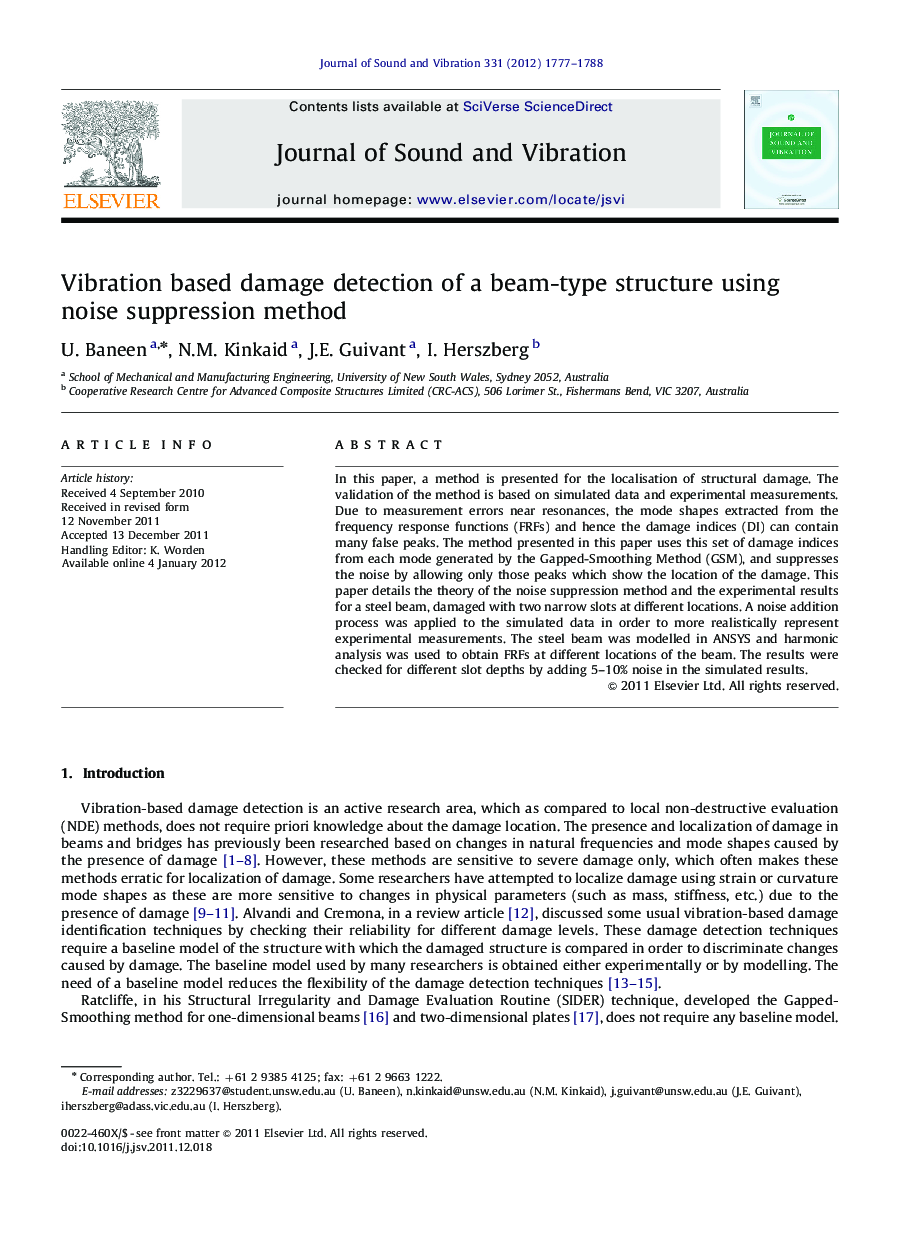| کد مقاله | کد نشریه | سال انتشار | مقاله انگلیسی | نسخه تمام متن |
|---|---|---|---|---|
| 288525 | 509628 | 2012 | 12 صفحه PDF | دانلود رایگان |

In this paper, a method is presented for the localisation of structural damage. The validation of the method is based on simulated data and experimental measurements. Due to measurement errors near resonances, the mode shapes extracted from the frequency response functions (FRFs) and hence the damage indices (DI) can contain many false peaks. The method presented in this paper uses this set of damage indices from each mode generated by the Gapped-Smoothing Method (GSM), and suppresses the noise by allowing only those peaks which show the location of the damage. This paper details the theory of the noise suppression method and the experimental results for a steel beam, damaged with two narrow slots at different locations. A noise addition process was applied to the simulated data in order to more realistically represent experimental measurements. The steel beam was modelled in ANSYS and harmonic analysis was used to obtain FRFs at different locations of the beam. The results were checked for different slot depths by adding 5–10% noise in the simulated results.
► We found severe and small damage in steel beam from both experiment and simulation.
► We developed a method to suppress noise using damage indices from Smoothing method.
► Mode shape reconstruction proves to be vital in fitting and smoothing out the data.
► Re-sampling improved the results by providing high spatial resolution.
► Identification of localized damage is dependent on its severity.
Journal: Journal of Sound and Vibration - Volume 331, Issue 8, 9 April 2012, Pages 1777–1788